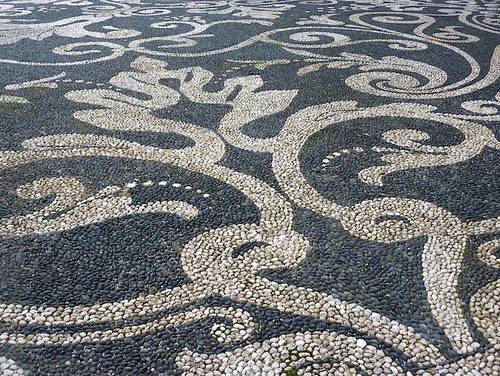Rissëu is the local name given in Liguria to a peculiarly Genoese form of decorative cobblestone paving. The style was enormously fashionable in the 17th and 18th centuries; it is thought that it may have been inspired by Graeco-Roman mosaics which the maritime republic’s sailors encountered on their Mediterranean voyages. Or the tradition may be younger than this: there is an apparent kinship between Ligurian rissëu and the patterned pebble-stone paving of the Greek Dodecanese.

One feature that the pebbles share is their rounded form. Each of them has been smoothed by the sea, which makes them easy to walk on. The bonding medium is lime mortar and porcelain powder. The stones are chosen for their size and colour: usually black and white, though occasionally red. The word rissëu is in fact Genoese dialect for ‘pebble’ and may derive from the French ruisseau, a stream or brook. Beautiful rissëu pavements can be seen throughout Liguria. The example pictured is a detail of the courtyard of Villa Durazzo, in Santa Margherita Ligure.
Other evidence seems to show that the custom is older still: neither Roman, nor Greek nor Hellenistic but Assyrian (roughly 800–600 BC). The pebbles are still water-smoothed, but not by the sea: these are river pebbles. There are at least two sites in Turkey with pavements of this sort. One is Tille on the Euphrates and the other is Ziyaret Tepe. Vast dam-building projects in Turkey mean that both floors will soon be under water (in fact, Tille already is). But there will be a reconstructed pavement in the new Diyarbakır museum (if and when it opens) and visitors will be able to walk on it.
©Blue Guides: Paul Blanchard, Annabel Barber, Paola Pugsley. For more on Liguria, the Dodecanese and eastern Turkey, visit our digital titles list here; to read about the new museum at Diyarbakır (and two other projected new Turkish museums), see here.






